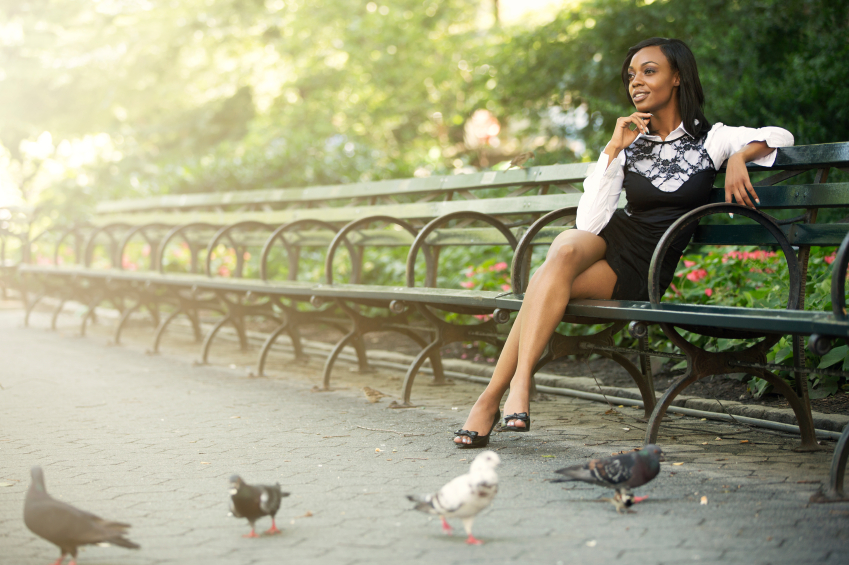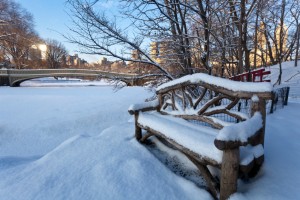 Park benches in Central Park - there are 9,000 of the
Park benches in Central Park - there are 9,000 of the
By Alysa Kleinman
"I love you very much and look forward to marrying you ... but if we have a fight you can always sleep here."
You just read one of around 4,100 personalized messages engraved on park benches in Central Park. The simple inscriptions make these cold benches surprisingly human, with messages from hilarious to heart warming. They add to the unique community feel that you can only find in the most visited urban park in America.
"For C& B- who survived the Holocaust, and began a life in this city. With deep love and abiding memory- from your children and grandchildren."
"Sit. Relax. Take a Deep Breath. Enjoy the day."
"Angie, Have I asked you to marry me yet today? Love, Mike."
"…This is a place to dream things that never wereâ€â€Âand ask why not."
"Daydreamers welcome."
For around $10,000 per bench, lovers rich and poor of all ages can adopt a park bench from the Central Park Conservancy. The New York Times shared several stories of inspiring Central Park bench adoptionsâ€â€Âfrom a woman who set up a memorial for her father, who dreamed of adopting his own bench, to the husband and wife who adopted a bench for their 59th wedding anniversary.
 Rustic wooden park bench in front of the Bow Bridge after stor
Rustic wooden park bench in front of the Bow Bridge after stor
"59th wedding anniversary 2008 on June '43 Lt. Nathan Polsky and his love Janet sat here from dusk to dawn before he left to serve overseas."
Ms. Polsky said that the neighboring park benches around theirs were all adoptedâ€â€Âas if their bench was the waiting for them.
The Adopt-A-Bench program started in 1986 as a fund to help maintain Central Park. Since then, thousands of husbands and wives, celebrities and politicians, and lovers and families have adopted their own park bench in the massive 843-acre park.
With 9,000 benches total in the park, 4,900 are still available for adoption, meaning there are still thousands of messages yet-to-be-installed throughout the park. Besides their beautiful messages, Central Park's benches also have a distinct style and history that is quintessentially New York.
The Evolution of Central Park Benches
When you imagine life in the early to mid-nineteenth century, you probably picture log cabins found in Little House on the Prairie. Similarly, the original benches in Central Park were rustic wooden benches crafted out of logs from the Adirondacks, with Frederick Olmsted and Calvert Vaux leading the design. The pair of landscapers and architects won a design competition in 1858 with their Greensward Plan, which laid out designs to strategically improve and expand Central Park.
Currently, you can find similar rustic park benches along the Ramble (near 74th Street) and the Naturalists' Walk (West side between 77th and 81st Streets). Their wooden logs really add to the naturalist view of the park and help fade away the city's noisy chaos. If you're looking to adopt one of these handcrafted benches you can, but it will cost you up to $25,000.
As New York's population boomed and the demand for seating within Central Park grew, the settee was mass produced. Its design provided seating for the high demand of visitors heading to the park in the late 1850s. The New York Times reported in a 1994 article that the invention of very hot furnaces led to these cast-iron settees, which served as an inexpensive, but sturdy seating option.
Olmsted and Vaux, who designed the beautifully crafted rustic log benches, also designed the park's settees, with the mindset that "artificial structures should be subservient to the main idea" and that "the park itself should always be uppermost in the mind of the beholder." That's why the original settees were minimalist and almost transparent, allowing a focus on the surroundings.
In 1934, Robert Moses became the Parks Commissioner of New York with a burning desire to leave his mark on Central Park, which was worn out from the Great Depression.
With homeless people sleeping on benches, Moses wanted to create a bench that was very sturdy or at least looked sturdy. He collaborated with Kenneth Lynch to design the Moses Bench, also called the World's Fair Bench because around 8,000 were installed for the 1938-1939 New York World's Fair. Moses and Lynch hired unemployed workers to construct the benches.
Built from cast iron with an Art Deco flair true to the time period, you can still find Moses Benches around the park today, with their hooped arms and legs serving as a visual reminder of design at the turn of the century. The design stood the test of time and has only seen a few changes over the years, with prominent placement near some park entrances and similar benches found throughout the United States.
After the World's Fair bench, the settee was reintroduced in 1994, and several modern metal and even neon benches have been installed in recent years. Commemorative benches also dot the park, including the Whisper Bench (another Robert Moses effort), whose shape lets even a whisper easily travel to the other end of the bench. The Andrew H. Green bench honors Andrew Green, the "Father of New York City" who oversaw the Greensward Plan and helped consolidate the five New York City Burroughs. Five Maple trees surrounding the bench represent this major contribution to the city.
It's easy to rush past a park bench without a second glance, especially in the chaotic hustle of New York City. But each park bench has a storyâ€â€Âlove stories that go back 50 years or stories that are still being written. While some of these stories you can read on the bench's inscriptions, others you have to create yourself.
So next time you're busily rushing through your local park, whether it's 150-year-old Central Park or a brand new park with young trees, take a second to sit down, enjoy the breeze, read a book, and just think about your life story. Just like the thousands of people who have sat on those wooden benches before you.
The Park and Facilities Catalog is a national site furnishings company and has a large selection of park benches for sale.


